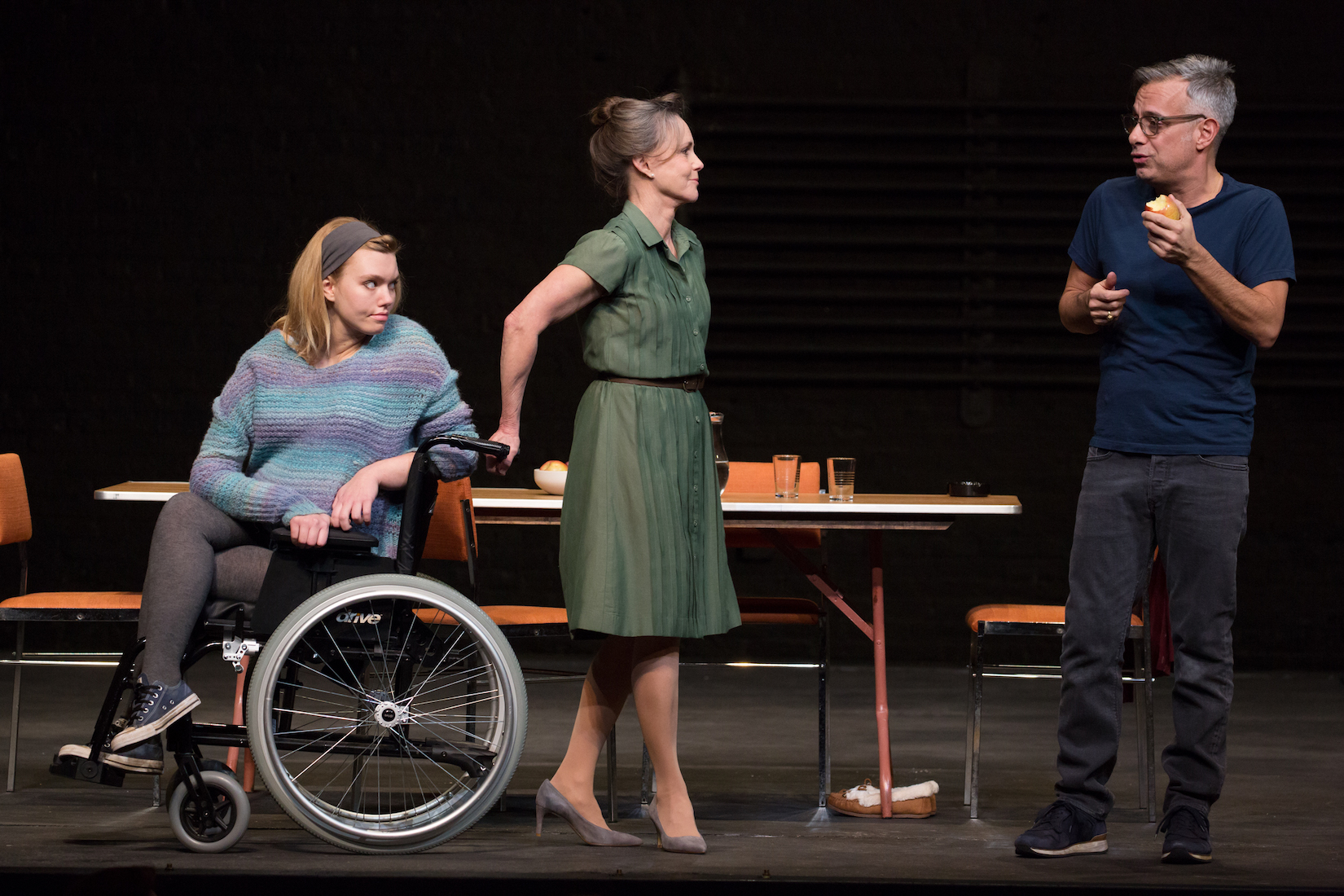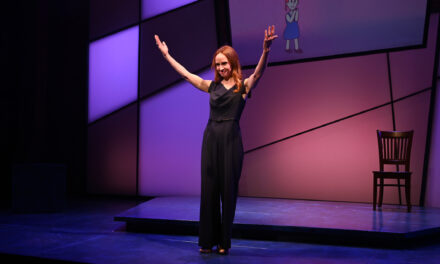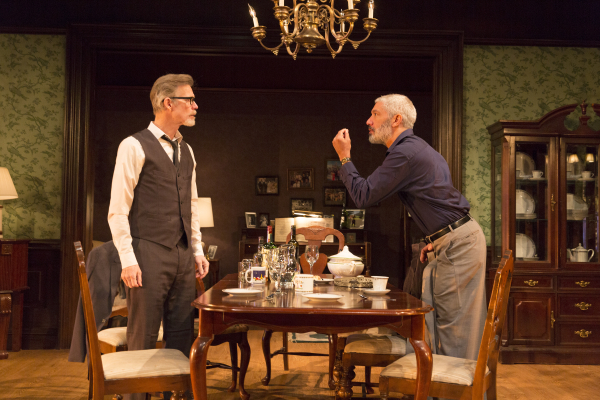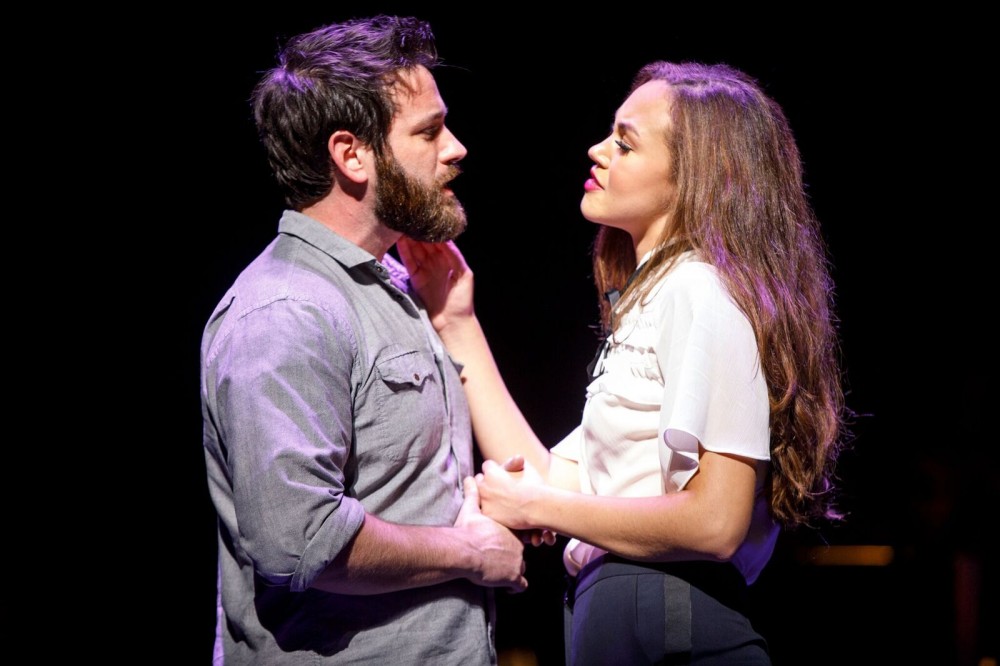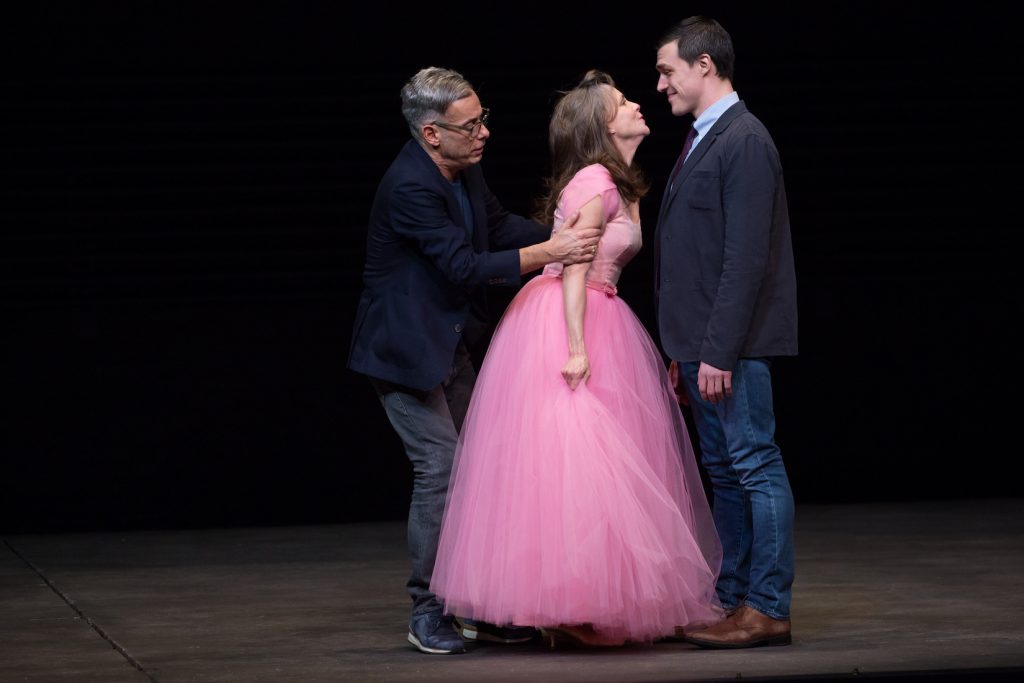

by JK Clarke
I have to admit that I was at first deeply ambivalent about Sam Gold’s new staging of the classic Tennessee Williams play, The Glass Menagerie which opened on Broadway tonight at the Belasco Theatre. On one hand, the painful accounting of a faded, woeful southern belle attempting to marry off her imperfect daughter to a “gentleman caller,” is minimally staged with bold performances to great effect. On the other, Gold has created a voyeuristic production that alienates the players and makes the audience complicit in a social sideshow. Ultimately, I have to conclude that both of those sentiments are the result of a thoughtful and creative staging of an expertly written work that transcends time and place.
Most of us are familiar with this play that made Williams famous, having encountered it somewhere along the way. It has seen numerous Broadway productions since its 1946 debut, almost always featuring a cast of marquee names in roles hailed as hallmarks of their time. This production will no doubt prove a benchmark for new audiences, eliciting impossible comparisons down the road, particularly for both Sally Field and Finn Wittrock’s stellar performances.
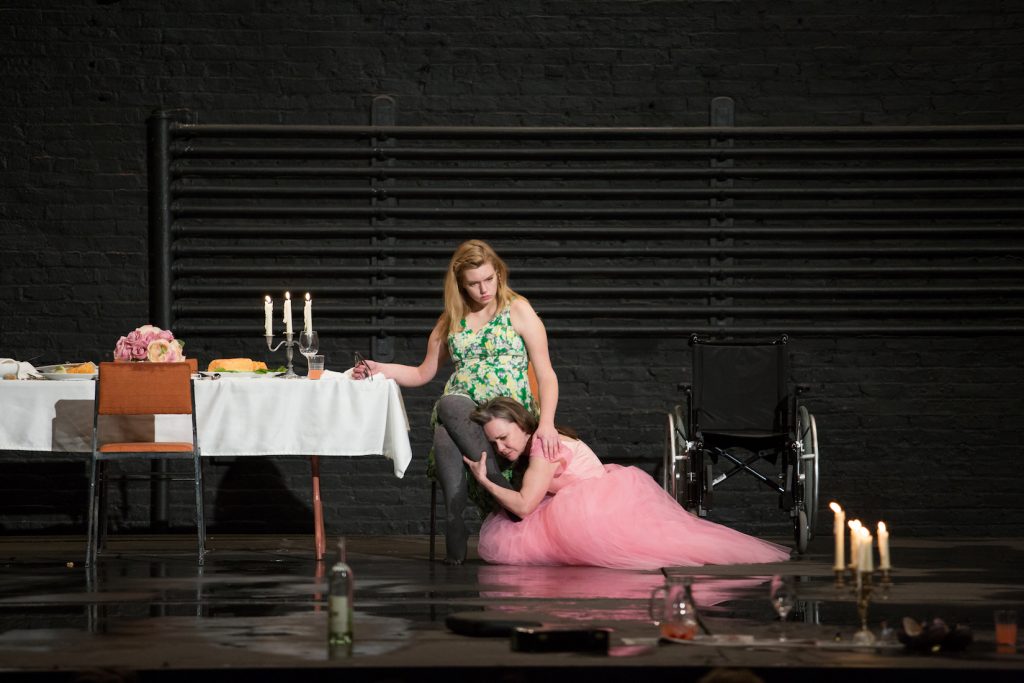

The Glass Menagerie is a memory play, narrator Tom Wingfield (a very convincing, writerly-type Joe Mantello) assures us at the open: “. . . it is dimly lighted, it is sentimental, it is not realistic.” It’s understood to be Williams’ largely autobiographical recounting and painful portrait of his home life. And indeed, here it is dimly lit, and sparse. Andrew Lieberman’s stark, chronologically loose set (the family telephone is of a variety that wouldn’t be seen for another 40 years, for example), fully exposes the wide open enormity of the Belasco stage, exposing the building’s back wall and its staggeringly high ceiling, dwarfing the relatively tiny essentials of the family apartment: a table and basic home furnishings in a corner stage right, downstage.The effect, of course, is to further isolate an already lonely, diminished family. Tom lives with his mother Amanda (Sally Field) and sister Laura (Madison Ferris, in her Broadway debut), working a dreary factory job to support them, their father having abandoned them some years prior. Father’s portrait (invisible to the audience, but often referenced) looms over the household, a painful reminder of his total absence.
Amanda doesn’t approve of Tom’s lifestyle (he’s always off to the movies, probably drinking, and—horrors!—constantly reading and writing). She knows she can’t count on him to take care of them in the future, so she enlists him to bring home a young man from work to perhaps woo Laura. Amanda’s go-to story (so often repeated that the kids know it by heart) of self-aggrandizement is the time, in her youth as a debutante, when she received “. . . seventeen!—gentleman callers. Why, sometimes there weren’t enough chairs enough to accommodate them all,” she proclaims. Laura receives none. Not only is she an introvert, preferring zoo animals, both living and glass, to social interaction; but, she also has a mobile disability, having contracted polio as a child.
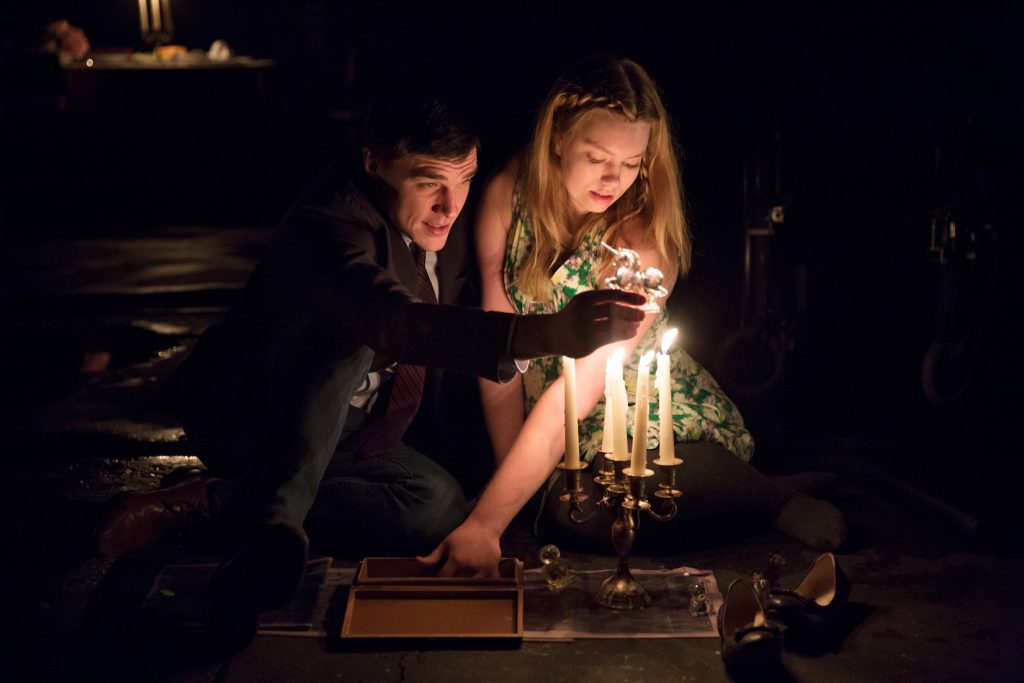

This is where the production gets interesting. When the play opens and we meet Laura, Ms. Ferris is seated in a wheelchair in the front row of the audience, with Ms. Fields behind her, pushing her to a stairway. The immediacy of the obstacle sets the audience on edge: Is she really wheelchair bound? If so, why not enter from stage level? We soon see two things: first that Ms. Ferris, the actor, is indeed disabled; and second that Gold wants us to know it. It’s a direct reference to and interaction with Amanda’s use of, and fury at, the term “crippled” to describe her daughter. We become complicit in our observation of Laura as different—just as everyone in their community did—which led to her being ostracized (or so Amanda wants us to believe).
Ms. Ferris is not, however, incapacitated. Helped out of her wheelchair, she is able to move about the room, walking on all fours with her posterior raised high. Her study of dance and movement is apparent, for there is a grace and facility in her mobility. Her Laura, consequently, is more relatable, lovable and sympathetic: it’s obvious why she has retreated into a corner of the world. So when the unsuspecting dinner guest/blind date Tom has brought home from work—the effusive Jim O’Connor (an absolutely magnificent and effervescent Finn Wittrock), a glad-handing, grinning, go-getter in the midst of studying sales technique and “can do” mannerisms—has an apparently genuine connection with Laura and begins to share a tender moment, we are rooting for her wholeheartedly. Jim and Laura seem like a perfect match: he’s a John Edwards-looking, seemingly sincere “feller,” who doesn’t appear judgemental. Soft-spoken, sweet Laura is smitten. So when he suddenly turns off the charm and pivots away from their tender moment, it hits like a sledgehammer. The pleasantly realistic on-stage rain shower (compete with the smell of breezy summer rain) which had been soaking Tom and Amanda (in her pink chiffon gown) on the fire escape suddenly dampens him, too.
The audience is meant to share in the tragic nostalgia of Tom’s tale. He’s mortified by his behavior (leaving the family behind forever shortly after this ordeal), even twenty years hence, and sharing it with us is his therapy of a sort. So the hollowness we feel at curtain is evidence of a production that conveys the story perfectly. We walk away, like Tom, with heavy hearts and hoping that somehow things worked out for Laura.
The Glass Menagerie. Through July 2 at The Belasco Theatre (111 West 44th Street, between Broadway and Sixth Avenue). www.glassmenagerieonbroadway.com Runtime: 2 hrs 5 min, no intermission.
Photos: Julieta Cervantes


